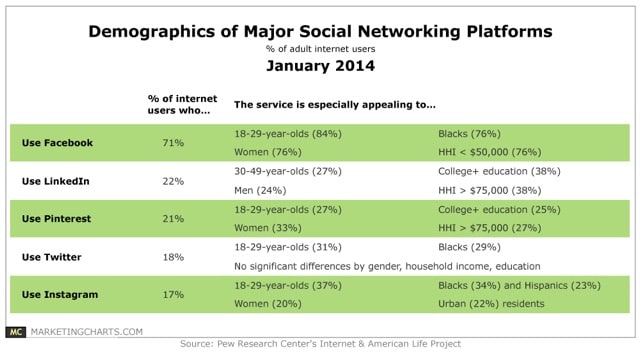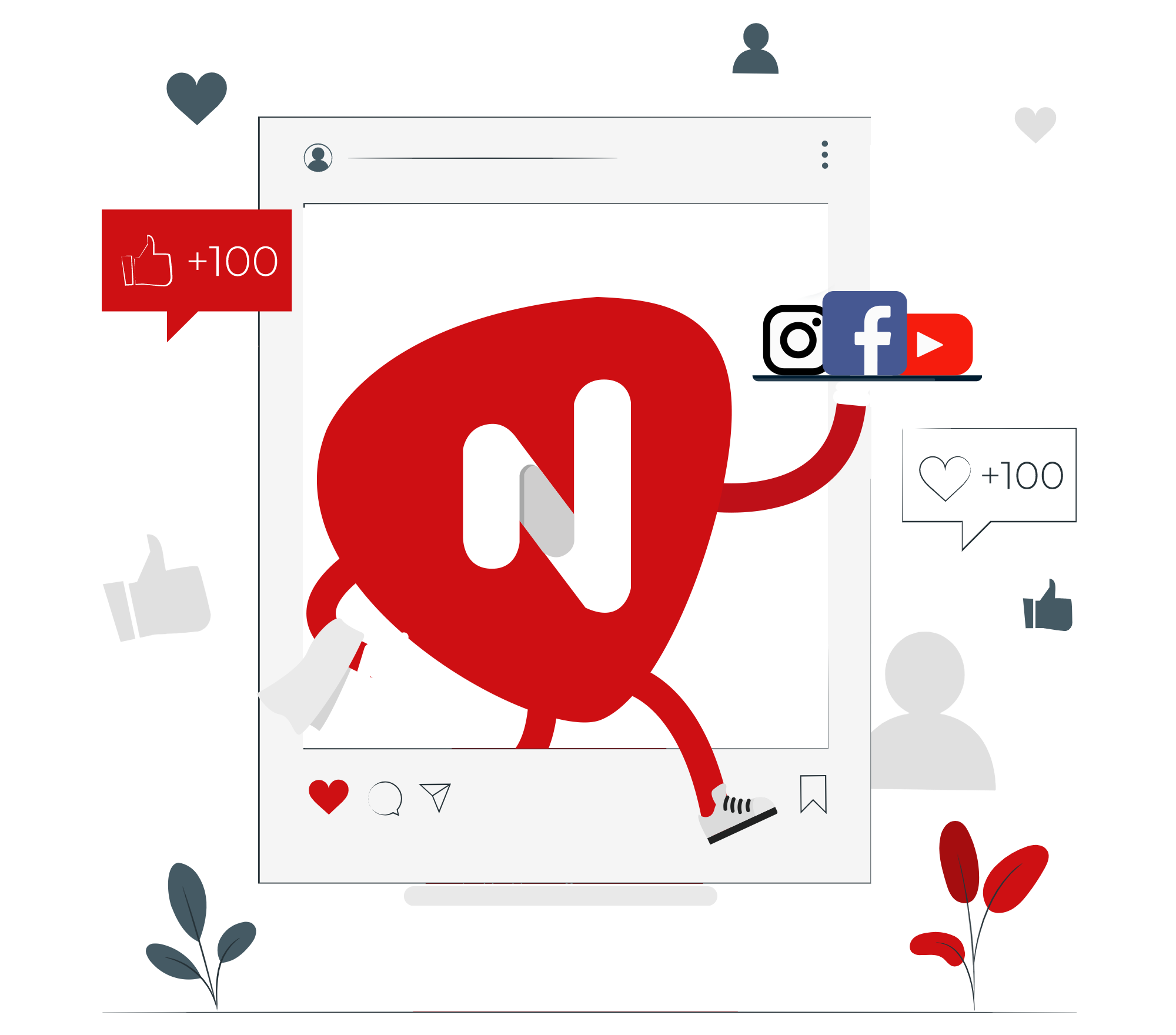What is a social media marketing strategy?
A social media marketing strategy is nothing but a clearly defined plan with milestones and targets on how to use social media networks for your benefit, whether this is promoting your personal brand or business.
A strategy will tell you which social networks to use, how to use them, what to expect as a return from each network and how to measure progress.
Why do you need a social media strategy?
A few years ago when the social media buzz started it was easy to get into the social media wagon. All you have to do was to create a Facebook page and a twitter account and start following people by sharing your personal or business posts. The more people you followed, the more followers you would get and the more exposure your updates would receive.
Today things are different. Not only because there are more social networks that matter (think Pinterest, Google+, Instagram, LinkedIn) but because the competition is so big and it takes a lot more effort to get attention
Facebook has changed their algorithm in such a way that reduces the organic exposure of a post (in other words fewer people that follow you see your updates), twitter is going to the same direction and Pinterest has become oversaturated which makes it more difficult to get good results.
That’s why it is time to stop for a moment and think about your social media strategy as a whole. Identify what are your social media goals and the best ways to achieve them without breaking the bank and without losing more time posting, tweeting and pinning than needed.
How to create a social media marketing strategy?
#1 – Identify your social media goals
The first step in creating a social media marketing strategy has to do with identifying your goals. A successful social media marketing strategy has a number of benefits to offer to your brand or business, which are in essence your social media goals. The most common goals are:
To get more followers to your business pages – Facebook, LinkedIn, Google+ and Pinterest allow you to create social media pages for your business and naturally one of your goals would be to have more people following your pages.
To get more visits to your website – Most businesses use social networks as a way to get more visitors to their websites. In theory, there are millions of users on social media and you want to get a portion of them (in many cases a very tiny one) to visit your website.
To increase sales – Social networks can be used as a sales channel. You can increase your sales by either selling directly on the social network or through your website.
To raise brand awareness – This is perhaps one of the most efficient ways to utilize social networks. You can raise brand awareness by positioning your brand in front of your target audience either through organic ways or through advertising.
To boost your SEO – While there are no direct SEO benefits from social media there are a lot of indirect benefits that can positively impact SEO. As a simple example, pages shared through social media networks are more visible to Google and other search engines and this has a positive effect on your overall SEO. Social media is not meant to replace SEO and SEO does not depend on social media. Read Social Media VS SEO for an in depth analysis.
#2 – Associate social media goals with business goals
The second step is to associate social media goals with business goals. Assuming that you are not using social media for the sole purpose of connecting with friends or reading all sorts of news, you need to connect your goals with business objectives.
For example you may set a social media goal to get more visitors from Facebook and a business goal to convert those visitors into newsletter subscribers. If you have setup your Google Analytics correctly you will also be able to see number of visits and conversion rates and track your progress over time.
If you want to take it a step further, you can calculate how much it costs you to get a new newsletter subscriber from Facebook and determine if this is profitable for your business or not. Of course you can use any other criteria like make a sale or acquire a lead and not just newsletter subscriptions.
#3 – Identify your target audience
There are millions of users in social media networks right now, as you are reading this post, but for business purposes you want to target specific audiences. Depending on your type of business you may want people that live in a particular area, are of certain age, and have other specific demographic characteristics.
If for example you are promoting a kindergarten school in Ontario, you want only the people that live close to your area to see your posts or ads and not everybody. To do that you use targeting, a feature that will narrow down your audience but it will make it more targeted.
For example if you are using facebook ads to promote your business or products, you can choose specific locations that will see your ads and people that satisfy certain criteria. See an example from Facebook Ads below.

#4 – Choose your weapons
How can you better reach your target audience, is it through Facebook, Twitter, LinkedIn or any other social network? Should you work on all networks at once or is it better to concentrate on only a few?
To answer the last question first, it all depends on time and budget. Social media management is a time consuming process. Trying to work on all networks at once will take a lot of your time (if you plan to do this yourself) or budget (if you plan to outsource this to a digital marketing agency).
A better approach is to start with a few networks first that are more likely to work for your business and then if time and budget permits to move on to the rest. Instead of trying to do a bit of everything, it’s better to put more effort in the ones that can work better.
There are a lot of studies that show the characteristics of each network. The chart below is from marketingcharts and there is also a nice report from PewResearch Center that can help you decide which networks to use.

#5 – Take a sneak peek at your main competitors
While you are working defining all the bits and pieces of your social media strategy, take a break and see what your competitors are doing. Visit their facebook page, twitter account etc and notice how often do they post, how many followers they have (and if that number grows over time), what kind of content to they post and generally try to understand how they are using social media. Maybe you get an idea or two and find out something about your competitors that you didn’t know before.
#6 – You need content, a lot of content
Users in social media networks are looking for one thing: interesting content. Whether this is an image, text or a video, users want to see interesting content in their timelines. This means that you should forget about over-promotional posts, but rather you need to think what kind of content your target audience would like to see without getting bored.
For example if you are selling sports shoes, you won’t post all the time about how good your shoes are but you should try and make your posts more interesting. How about posting running tips, or how shoes can affect your sports performance or tips on how to run longer etc.
These are the kind of posts that will make a user follow your page and build trust to your brand which has a lot more benefits than making a single sale.
#7 – And yet, it’s not only about content
Yes you do need a lot of good content but content alone will not get you followers or sales. As I said in the beginning organic reach is getting lower and lower (especially with Facebook) so you need more than just good content to get exposure and interaction.
To bypass this situation you can either hire professionals to manage your account and increase your following (and I am not talking about buying followers but doing it the proper way – and there is a proper way) or use the advertising platforms of each network.
For example you can use Facebook ads to get more likes for your business page or promoted accounts to get more twitter followers.
From experience, this part of exploring other ways to promoting and managing a social media account, is a common item missing from social media marketing strategies.
#8 -You do have to create a plan
A social media strategy is not complete without a plan. A well thought plan should include all the above but also specific details, KPIs and targets about each network.
In your plan you should include:
- Which networks to use
- The goals (both social and business) for each network
- How to measure results (which reports from Google analytics for example) and what KPIs are important.
- A detail description of your target audience (location, demographic characteristics, interests)
- A content marketing plan that includes the exact content to be published and when (specific date and time)
- The budget available to use for outsourcing account management
- The budget available to use on advertising platforms
- The role of each person (in case of a team). For example in a typical scenario you will need a content producer, a content publisher, an account manager and a social media manager who is responsible to monitor the campaigns and the overall social media presence of a company. In large companies these are under the supervision of a digital marketing manager.
- Monitoring and control – a plan needs to also have a monitoring and control system. It does not have to be complicated but it should stay how often the progress should be monitored and what happens in the case that the initial targets are not met.
Final Thoughts
You cannot neglect social media for any reason. All kind of businesses, either online, local or multinational have something to gain from social media.
If you don’t approach the whole process as a ‘real’ project most probably you will end up with disappointment and believe that social media does not work as advertised.
From my experience and as shown by many studies, social media has become a great communications and sales channel that deserves your attention both in time and budget. A carefully designed social media marketing strategy is necessary for many reasons but most importantly it will help everybody in your company understand why you are doing the social network game and what to expect from it.







